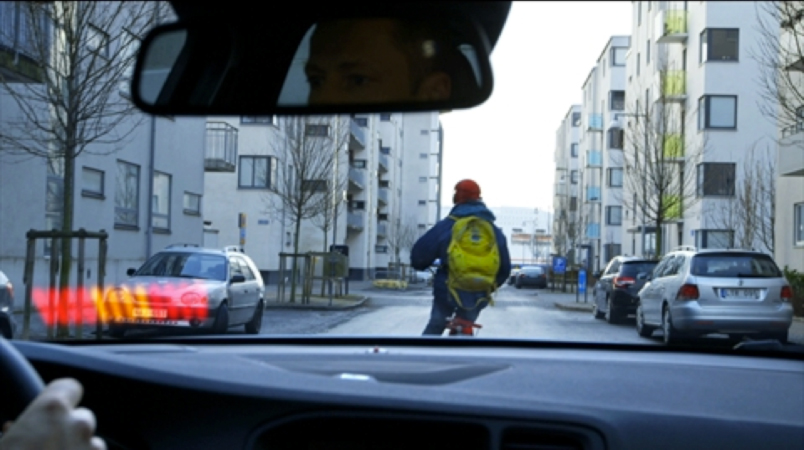Volvo Demos a Nifty Cyclist Detection System
Cyclists and drivers have been sworn enemies for as long as anyone can remember. Biking around Boston means dodging opening car doors, swerving around potholes, and enduring incomprehensible abuse from permanently enraged taxi drivers. Driving the same streets in a car, meanwhile, involves keeping one eye peeled for cyclists who run red lights, weave through traffic, and generally seem hell-bent on injuring themselves. A clever new system from Volvo could perhaps help thaw relations between these natural roadway foes.

The system uses a camera embedded in a car’s rearview mirror, combined with a radar instrument in the grill to scan the road ahead. If it spots an object, an onboard computer will determine whether it is a cyclist or a pedestrian, and it’s ready to apply the brakes if someone swerves out into traffic or darts across road. Many cars already come with safety systems that will brake if a collision with another vehicle or a pedestrian seems imminent. These systems have probably saved lives. By tracking nearby moving objects, the Volvo system could prevent further accidents.
What I like most about this system is the way it enhances a driver’s awareness of his or her surroundings. If a driver doesn’t spot a cyclist, the warning flashed on the windscreen (see above) will serve as a reminder to drive more cautiously. Augmenting drivers’ ability to monitor the road is increasingly common—some BMWs, for instance, come with a camera system that reads traffic signs as they whiz by and shows the correct speed limit on the dashboard—and it can be preferrable to a system that tries to take over completely.
Volvo will demonstrate the system at this year’s New York Auto Show and says it will appear in virtually all its models from mid-2013.
Keep Reading
Most Popular
How scientists traced a mysterious covid case back to six toilets
When wastewater surveillance turns into a hunt for a single infected individual, the ethics get tricky.
The problem with plug-in hybrids? Their drivers.
Plug-in hybrids are often sold as a transition to EVs, but new data from Europe shows we’re still underestimating the emissions they produce.
What’s next for generative video
OpenAI's Sora has raised the bar for AI moviemaking. Here are four things to bear in mind as we wrap our heads around what's coming.
Stay connected
Get the latest updates from
MIT Technology Review
Discover special offers, top stories, upcoming events, and more.